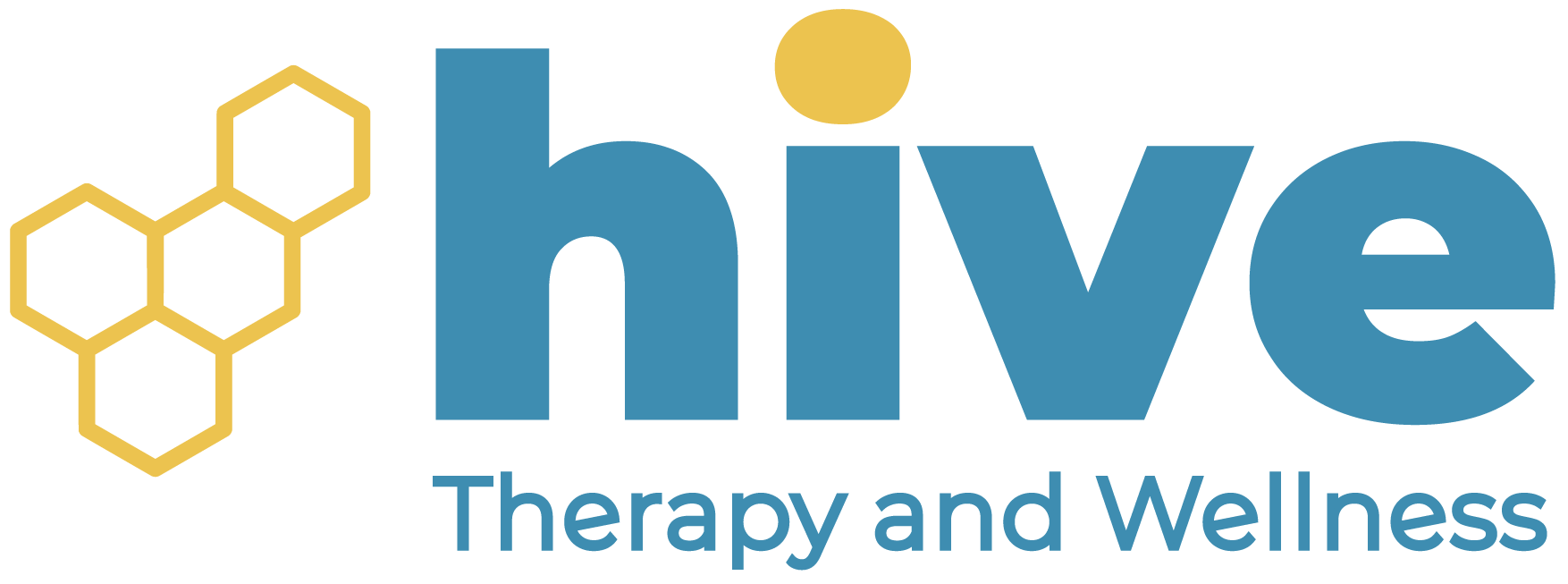Orgasm Disorders
Move Better. Live Fuller. Your Wellness Journey Starts Here.
Schedule a FREE Discovery Call!
What Are Orgasm Disorders?
An orgasm disorder is any dysfunction relating to having an orgasm, such as pain during or after an orgasm, difficulty achieving an orgasm, delayed orgasm, or absence of an orgasm.
It can also apply when someone does not have orgasms as often or as strongly as they would like. Orgasm disorders are not limited to one body type. In other words, they can affect anyone regardless of their genitals—but they are more common for individuals who have a vagina.
There are many types of orgasm disorders, most of which are treatable by a pelvic floor physical therapist. Here are some examples:

- Anorgasmia: Inability to achieve an orgasm.
- Dysorgasmia: Pain or discomfort that occurs during or after an orgasm.
- Hyporgasmia: Experiencing orgasms with an unsatisfactory level of pleasure.
- Delayed orgasm: Occurs when an orgasm takes a longer amount of time to be achieved.
- Premature orgasm: An orgasm that occurs too quickly.
- Orgasmic anhedonia: Describes the absence of pleasure during an orgasm.
Any of these disorders can occur even with adequate arousal and stimulation. Understandably, orgasm disorders can be frustrating, and it may even feel isolating when your body doesn’t react the way you expect. However, you are definitely not alone; orgasm disorders are more common than you may think. Luckily, they are very treatable, especially with pelvic floor physical therapy!
Seeking treatment for an orgasm disorder may seem embarrassing to some, but no need to worry! Hive Therapy and Wellness is here to dispel all shame and happily welcome you into our clinic. Sexual health and pleasure are normal aspects of our lives—absolutely nobody should feel ashamed when seeking better health!
Our physical therapists work hard to not only make you feel comfortable and welcome in their clinic, but also confident enough to speak up about your needs. We’re here to listen and be a motivator for you and your health goals!
What Causes Orgasm Disorders?
Orgasm disorders are not simply attributed to physical factors—they actually involve many other aspects, including neurological, hormonal, and psychological factors, too. In terms of pelvic floor therapy, the first factors you may think of are the physical ones; in other words, pelvic floor dysfunction.
Pelvic Floor Dysfunction
Pelvic floor dysfunction can be described as weakness, tightness, inflexibility, or poor coordination of the pelvic floor muscles. The pelvic floor is an incredibly important group of muscles that each and every person has. These muscles play a major role in sexual function and appreciation! They allow for arousal, sensation, orgasm, and ejaculation.
When there is pelvic floor dysfunction present, it is more difficult for the pelvic floor to have optimal sexual function, and other symptoms like pain and discomfort often follow. Here are some examples of how pelvic floor dysfunction can impact orgasms:
- Weak pelvic floor muscles result in weak orgasms or difficulty achieving orgasm.
- Tight pelvic floor muscles can create pelvic pain, lessened arousal, discomfort during sex, trigger points, and painful contractions during orgasm. Tight muscles can impact blood flow, which may cause difficulties with achieving orgasm.
- Poorly coordinated pelvic floor muscles make it difficult for contractions to time correctly with other functions of the body, which can delay or disrupt orgasm.
Pelvic floor dysfunction can be caused by many things. Poor posture, harmful restroom habits, constipation, pregnancy, childbirth, injury, surgery, stress, anxiety—the list goes on. Additionally, other conditions can contribute to tension in the pelvic floor, such as endometriosis, prolapse, or pelvic pain disorders. Some other specific conditions that can affect the pelvic floor and prevent orgasm include:
- Vaginismus: Tight muscles that respond negatively to penetration can make orgasms painful.
- Scar tissue: Scar tissue from trauma, injury, or surgery may be inflexible and uncomfortable, contributing to muscle tension and discomfort that can impact orgasms.
- Childbirth trauma: After childbirth, the pelvic floor is often weak and, depending on the individual, may be in poor shape that prevents proper function and sensation necessary for orgasm.
- Nerve dysfunction or conditions: Certain nerve conditions such as pudendal neuralgia can affect the pelvic floor’s function and sensation, which can prohibit orgasm.
Outside of pelvic floor dysfunction, there are many other factors that affect an individual’s ability to orgasm, such as hormonal changes and psychological factors:
Hormonal Changes
Hormonal changes, such as with menstruation, birth control, pregnancy, or menopause can contribute to less arousal or comfort during sex, which can affect the ability to achieve orgasm. Other hormonal changes can cause lowered testosterone, which may impact libido and make it more difficult to achieve orgasm.
Psychological Factors
Psychological factors, such as stress, anxiety, and trauma can have a major effect on orgasms. Fear or anxiety related to sex or penetration can increase pelvic floor muscle tension, which in turn affects comfort and pleasure. This can create a cycle of frustration with sexual health. Therefore, it is very important to consider mental health and psychological factors when addressing orgasm disorders.
Hive’s physical therapists understand that this condition requires a multifaceted treatment approach, and are prepared to collaborate with other health professionals to help you achieve your health goals! This can include mental health professionals, sex therapists, gynecologists, or other professionals who may be a part of your health team.
Physical Therapy for Orgasm Disorders
Pelvic floor physical therapy is designed to improve your ability to orgasm by improving your pelvic floor function! Having tight, inflexible pelvic floor muscles makes it difficult to support the functions necessary for an orgasm, and prevents blood flow that would encourage arousal and lubrication. To address these issues, pelvic floor therapy works to:
- Strengthen weak muscles
- Release pelvic floor tension
- Improve control and coordination of your muscles
- Relieve trigger points
- Improve blood circulation
- Improve pelvic floor function
Achieving these goals will require pelvic floor strengthening, relaxation, and coordination training. Regaining control of your pelvic floor will improve your confidence and comfort for sexual activities, which may lessen any stress or anxiety as a result.
Your physical therapist will curate an individualized care plan consisting of a variety of treatments that will help you reach these goals. As a result, your ability to orgasm will be much better, and perhaps even stronger. They will start with a thorough evaluation, which will consist of the following:
- A discussion of your symptoms and relevant medical history.
- A pelvic floor assessment, which may include both internal and external examination.
At Hive Therapy and Wellness, we understand that receiving internal or external examinations may not be easy for all patients. Although these examinations can provide valuable insight for your provider, we never want you to feel uncomfortable in our clinic. Therefore, we will never perform treatment or examination without your explicit consent.
You are not required to consent to anything you are not comfortable with, and are able to rescind consent at any time. It is our goal to make each and every patient feel welcome, comfortable, and confident at Hive—so don’t let fear of examination stop you from seeking treatment!
So, what can treatment for orgasm disorders look like? Some treatment methods your physical therapist may use to improve your pelvic floor function include:
Neuromuscular Re-Education and Biofeedback
These treatments will be used to improve your awareness and control of your pelvic floor muscles. They involve specialized exercises and activities to help you learn to relax and contract your pelvic floor muscles as needed. These treatments are very important for restoring pelvic floor health and preventing future complications!
Neuromuscular re-education and biofeedback go hand in hand. Neuromuscular re-education helps the brain relearn or better understand movements of the body, and allows your pelvic floor therapist to correct your movements and make them more coordinated.
Biofeedback works alongside neuromuscular re-education and other treatments to provide valuable feedback that allows you to better understand your movements as you practice different exercises.
Pelvic Floor Training
As mentioned before, weak pelvic floor muscles cannot coordinate, contract, or relax as needed for strong orgasms. To help address this problem, your physical therapist will teach you exercises and stretches that will improve the strength and flexibility of your pelvic floor muscles, which will support the ability to achieve and maintain orgasms.
Manual Therapy
Manual therapy is a fantastic form of treatment that can relieve tension in the pelvic floor, address trigger points that cause pain, and mobilize scar tissue. Scar tissue can restrict mobility, impact nerve function, and cause discomfort, so manipulation and mobilization of scar tissue is helpful in releasing tension and reducing pain. Manual therapy will also mobilize nerves, which can reduce irritation that may be a cause of reduced sensation or function when experiencing orgasm.
This treatment works by mobilizing and manipulating soft tissues to reduce tension, encourage blood blow, and support better tissue function. This can be done with the provider’s hands, or with tools. Some techniques that utilize tools include dry needling, cupping, tissue scraping, massage with pelvic wands, and more!
Relaxation Techniques
To reduce tension and improve comfort, your physical therapist can teach you relaxation techniques such as diaphragmatic breathing. Practicing relaxation will prove useful when trying to maintain control of your pelvic floor and tension during sexual activities. Additionally, these relaxation techniques will allow you to better regulate stress and anxiety related to sexual experiences.
Education
Physical therapists are experts of the body. They can provide a wealth of information about sexual health, your pelvic floor, orgasms, and more. Feel free to ask your physical therapist questions—they can teach you about anatomy, how the pelvic floor aids in orgasm, and what factors can contribute to tension or pain in the pelvis.
As you can see, there are many treatments suitable for orgasm disorders. The providers at Hive Therapy and Wellness work to provide a holistic and individualized care experience for each patient. No matter what orgasm disorder you struggle with, they can create a suitable plan to address your needs! The treatments commonly used to curate a plan of care at Hive include the following:
- Neuromuscular re-education
- Manual therapy
- Exercise prescription
- Dry needling
- Cupping
- Tissue scraping
- Behavioral modifications
- Therapeutic activities
- Electrical muscle stimulation
- Spinal manipulation
- Therapeutic modalities
- Biofeedback
An orgasm disorder is any dysfunction relating to having an orgasm, such as pain during or after an orgasm, difficulty achieving an orgasm, delayed orgasm, or absence of an orgasm.
It can also apply when someone does not have orgasms as often or as strongly as they would like.
Orgasm disorders are not limited to one body type. In other words, they can affect anyone regardless of their genitals—but they are more common for individuals who have a vagina.
There are many types of orgasm disorders, most of which are treatable by a pelvic floor physical therapist. Here are some examples:
- Anorgasmia: Inability to achieve an orgasm.
- Dysorgasmia: Pain or discomfort that occurs during or after an orgasm.
- Hyporgasmia: Experiencing orgasms with an unsatisfactory level of pleasure.
- Delayed orgasm: Occurs when an orgasm takes a longer amount of time to be achieved.
- Premature orgasm: An orgasm that occurs too quickly.
- Orgasmic anhedonia: Describes the absence of pleasure during an orgasm.
Any of these disorders can occur even with adequate arousal and stimulation. Understandably, orgasm disorders can be frustrating, and it may even feel isolating when your body doesn’t react the way you expect.
However, you are definitely not alone; orgasm disorders are more common than you may think. Luckily, they are very treatable, especially with pelvic floor physical therapy!
Seeking treatment for an orgasm disorder may seem embarrassing to some, but no need to worry!
Hive Therapy and Wellness is here to dispel all shame and happily welcome you into our clinic. Sexual health and pleasure are normal aspects of our lives—absolutely nobody should feel ashamed when seeking better health!
Our physical therapists work hard to not only make you feel comfortable and welcome in their clinic, but also confident enough to speak up about your needs.
We’re here to listen and be a motivator for you and your health goals!
Orgasm disorders are not simply attributed to physical factors—they actually involve many other aspects, including neurological, hormonal, and psychological factors, too.
In terms of pelvic floor therapy, the first factors you may think of are the physical ones; in other words, pelvic floor dysfunction.
Pelvic Floor Dysfunction
Pelvic floor dysfunction can be described as weakness, tightness, inflexibility, or poor coordination of the pelvic floor muscles.
The pelvic floor is an incredibly important group of muscles that each and every person has. These muscles play a major role in sexual function and appreciation! They allow for arousal, sensation, orgasm, and ejaculation.
When there is pelvic floor dysfunction present, it is more difficult for the pelvic floor to have optimal sexual function, and other symptoms like pain and discomfort often follow.
Here are some examples of how pelvic floor dysfunction can impact orgasms:
- Weak pelvic floor muscles result in weak orgasms or difficulty achieving orgasm.
- Tight pelvic floor muscles can create pelvic pain, lessened arousal, discomfort during sex, trigger points, and painful contractions during orgasm. Tight muscles can impact blood flow, which may cause difficulties with achieving orgasm.
- Poorly coordinated pelvic floor muscles make it difficult for contractions to time correctly with other functions of the body, which can delay or disrupt orgasm.
Pelvic floor dysfunction can be caused by many things. Poor posture, harmful restroom habits, constipation, pregnancy, childbirth, injury, surgery, stress, anxiety—the list goes on.
Additionally, other conditions can contribute to tension in the pelvic floor, such as endometriosis, prolapse, or pelvic pain disorders. Some other specific conditions that can affect the pelvic floor and prevent orgasm include:
- Vaginismus: Tight muscles that respond negatively to penetration can make orgasms painful.
- Scar tissue: Scar tissue from trauma, injury, or surgery may be inflexible and uncomfortable, contributing to muscle tension and discomfort that can impact orgasms.
- Childbirth trauma: After childbirth, the pelvic floor is often weak and, depending on the individual, may be in poor shape that prevents proper function and sensation necessary for orgasm.
- Nerve dysfunction or conditions: Certain nerve conditions such as pudendal neuralgia can affect the pelvic floor’s function and sensation, which can prohibit orgasm.
Outside of pelvic floor dysfunction, there are many other factors that affect an individual’s ability to orgasm, such as hormonal changes and psychological factors:
Hormonal Changes
Hormonal changes, such as with menstruation, birth control, pregnancy, or menopause can contribute to less arousal or comfort during sex, which can affect the ability to achieve orgasm.
Other hormonal changes can cause lowered testosterone, which may impact libido and make it more difficult to achieve orgasm.
Psychological Factors
Psychological factors such as stress, anxiety, and trauma can have a major effect on orgasms. Fear or anxiety related to sex or penetration can increase pelvic floor muscle tension, which in turn affects comfort and pleasure.
This can create a cycle of frustration with sexual health. Therefore, it is very important to consider mental health and psychological factors when addressing orgasm disorders.
Hive’s physical therapists understand that this condition requires a multifaceted treatment approach, and are prepared to collaborate with other health professionals to help you achieve your health goals!
This can include mental health professionals, sex therapists, gynecologists, or other professionals who may be a part of your health team.
Pelvic floor physical therapy is designed to improve your ability to orgasm by improving your pelvic floor function!
Having tight, inflexible pelvic floor muscles makes it difficult to support the functions necessary for an orgasm, and prevents blood flow that would encourage arousal and lubrication.
To address these issues, pelvic floor therapy works to:
- Strengthen weak muscles
- Release pelvic floor tension
- Improve control and coordination of your muscles
- Relieve trigger points
- Improve blood circulation
- Improve pelvic floor function
Achieving these goals will require pelvic floor strengthening, relaxation, and coordination training. Regaining control of your pelvic floor will improve your confidence and comfort for sexual activities, which may lessen any stress or anxiety as a result.
Your physical therapist will curate an individualized care plan consisting of a variety of treatments that will help you reach these goals. As a result, your ability to orgasm will be much better, and perhaps even stronger.
They will start with a thorough evaluation, which will consist of the following:
- A discussion of your symptoms and relevant medical history.
- A pelvic floor assessment, which may include both internal and external examination.
At Hive Therapy and Wellness, we understand that receiving internal or external examinations may not be easy for all patients. Although these examinations can provide valuable insight for your provider, we never want you to feel uncomfortable in our clinic.
Therefore, we will never perform treatment or examination without your explicit consent. You are not required to consent to anything you are not comfortable with, and are able to rescind consent at any time.
It is our goal to make each and every patient feel welcome, comfortable, and confident at Hive—so don’t let fear of examination stop you from seeking treatment!
So, what can treatment for orgasm disorders look like? Some treatment methods your physical therapist may use to improve your pelvic floor function include:
Neuromuscular Re-Education and Biofeedback
These treatments will be used to improve your awareness and control of your pelvic floor muscles.
They involve specialized exercises and activities to help you learn to relax and contract your pelvic floor muscles as needed. These treatments are very important for restoring pelvic floor health and preventing future complications!
Neuromuscular re-education and biofeedback go hand in hand.
Neuromuscular re-education helps the brain relearn or better understand movements of the body, and allows your pelvic floor therapist to correct your movements and make them more coordinated.
Biofeedback works alongside neuromuscular re-education and other treatments to provide valuable feedback that allows you to better understand your movements as you practice different exercises.
Pelvic Floor Training
As mentioned before, weak pelvic floor muscles cannot coordinate, contract, or relax as needed for strong orgasms.
To help address this problem, your physical therapist will teach you exercises and stretches that will improve the strength and flexibility of your pelvic floor muscles, which will support the ability to achieve and maintain orgasms.
Manual Therapy
Manual therapy is a fantastic form of treatment that can relieve tension in the pelvic floor, address trigger points that cause pain, and mobilize scar tissue.
Scar tissue can restrict mobility, impact nerve function, and cause discomfort, so manipulation and mobilization of scar tissue is helpful in releasing tension and reducing pain.
Manual therapy will also mobilize nerves, which can reduce irritation that may be a cause of reduced sensation or function when experiencing orgasm.
This treatment works by mobilizing and manipulating soft tissues to reduce tension, encourage blood blow, and support better tissue function. This can be done with the provider’s hands, or with tools.
Some techniques that utilize tools include dry needling, cupping, tissue scraping, massage with pelvic wands, and more!
Relaxation Techniques
To reduce tension and improve comfort, your physical therapist can teach you relaxation techniques such as diaphragmatic breathing.
Practicing relaxation will prove useful when trying to maintain control of your pelvic floor and tension during sexual activities. Additionally, these relaxation techniques will allow you to better regulate stress and anxiety related to sexual experiences.
Education
Physical therapists are experts of the body. They can provide a wealth of information about sexual health, your pelvic floor, orgasms, and more.
Feel free to ask your physical therapist questions—they can teach you about anatomy, how the pelvic floor aids in orgasm, and what factors can contribute to tension or pain in the pelvis.
As you can see, there are many treatments suitable for orgasm disorders. The providers at Hive Therapy and Wellness work to provide a holistic and individualized care experience for each patient.
No matter what orgasm disorder you struggle with, they can create a suitable plan to address your needs! The treatments commonly used to curate a plan of care at Hive include the following:
- Neuromuscular re-education
- Manual therapy
- Exercise prescription
- Dry needling
- Cupping
- Tissue scraping
- Behavioral modifications
- Therapeutic activities
- Electrical muscle stimulation
- Spinal manipulation
- Therapeutic modalities
- Biofeedback
You can learn more about these treatments on our Treatments Page.





